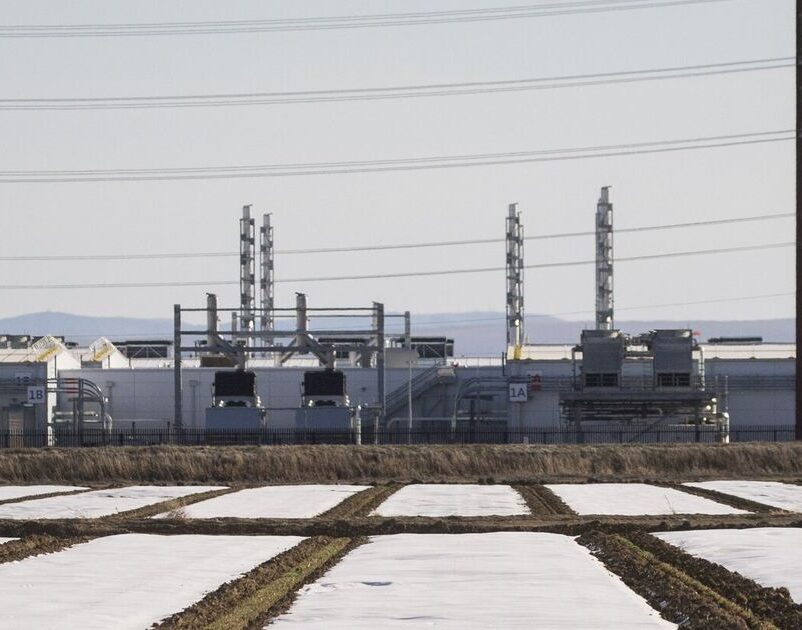
The Seattle area is in the thick of the race for artificial intelligence dominance.
The most recent evidence comes from Amazon, which intends to invest more than $150 billion over the next 15 years on data centers around the world.
Data centers contain computer systems and corresponding components, but they have moved well past their 1940s origins. They expanded during the dot-com years before the new millennium with the expansion of the internet and have become even more vital in the age of cloud computing.
The heightened importance of data centers today comes because of AI.
A race is on among the biggest players in tech as well as startups to capitalize on an approaching spike in demand for artificial intelligence applications. These include the needs of corporations, the government and individual customers (for example, television streaming companies such as Netflix use AI).
Seattle-headquartered Amazon holds the largest market share in the cloud computing market, nearly twice the share of its nearest competitor, Microsoft.
“We’re expanding capacity quite significantly,” Kevin Miller, an Amazon Web Services vice president who oversees the company’s data centers, told Bloomberg. “I think that just gives us the ability to get closer to customers.”
Amazon Web Services, founded in 2002, is the unit of the company that handles cloud computing among other areas of Amazon’s businesses.
Amazon’s investment comes after spending on data centers declined this past year — the first time this ever happened — while Microsoft increased its spending.
Plans call for expanding existing Amazon server hubs in northern Virginia (close to customers such as the Pentagon and other federal customers) and Oregon. Amazon also intends to move into new places such as metropolitan Phoenix, Texas, Mississippi, Saudi Arabia and Malaysia.
Amazon’s proposed investment in data centers is probably far beyond that of Microsoft or Alphabet (parent of Google). Neither of these companies releases its data center investments as consistently as does Amazon.
The company is accelerating the AI “arms race” in other ways, such as investing $2.75 billion in Anthropic, an AI startup headquartered in San Francisco. This brings Amazon’s total stake in Anthropic to $4 billion. Meanwhile, Google has agreed to put $2 billion into the startup.
The local startup scene is also taking advantage of the appetite for artificial intelligence. According to GeekWire, a tech website, Seattle’s Read AI gained $21 million in new funding from Madrona Venture Group and Goodwater Capital. Read AI also provides services for Microsoft.
Read AI uses artificial intelligence to provide customers with productivity tools such as meeting notes, chat and email summaries, as well as transcriptions in multiple languages.
David Autor, the MIT economist famous for studying the effect of the digital revolution and offshoring of jobs on workers and wages, is now an AI optimist.
He wrote in Noema Magazine, “A.I., if used well, can assist with restoring the middle-skill, middle-class heart of the U.S. labor market that has been hollowed out by automation and globalization.”
He’s looking at “generative” artificial intelligence, which is capable of providing videos, text, images and other data.
According to The New York Times, Autor “discounts the likelihood that A.I. can replace human judgment entirely. And he sees the demand for health care, software, education and legal advice as almost limitless, so that lowering costs should expand those fields as their products and services become more widely affordable.”
That contradicts other experts. This past year, Goldman Sachs produced a report claiming that generative AI could automate activities equal to 300 million full-time jobs around the world.
Data centers present problems as well as advantages. For example, they use water heavily to avoid overheating, failure or fire. A study by Virginia Tech found that data centers are among the top water-using industries in the nation.
That’s a risky situation for places such as Arizona, where the Phoenix suburb of Mesa has bet its economic future heavily on these server farms.
“You have to think about how much of the Western United States is water-stressed,” Landon Marston, a professor of water resources engineering at Virginia Tech and one of the study’s authors, told The Washington Post.
For example, California hosts at least 239 data centers, and Arizona has at least 49. Both are heavily reliant on the drought-stricken Colorado River.
Data centers can also suffer from poor design, lack of room for expansion and heavy energy use. The latter is an issue for Amazon data centers in Oregon and Virginia, where utilities are stressed by the power demands of the centers.
Late this past month, protesters blockaded Amazon’s corporate headquarters, demanding that the company distance itself from using natural gas coming by way of a new pipeline from Canada to the Pacific Northwest.
According to The Wall Street Journal, AI’s electricity demand will soon outstrip all the requirements of electric vehicles.
This will draw more attention to Amazon’s pledge to use renewable energy for all its operations by next year.
I’ve written before about AI as something out of the “Terminator” movies, but also how Seattle is a major AI center. Will AI be used for good or evil? Looking at human history, the answer is probably both.
Elon Musk worries about a 20% chance that AI will destroy humanity. Still, he says it’s worth the risk.
The reality is that artificial intelligence is the undiscovered country (to crib from Shakespeare).
It has the capacity to increase employment, seed new companies and industries, change the way wars are fought, boost productivity, work in education and transform health care and the media.
For now, this column is being written by a human.




